Rosa rugosa or rugosa roses are hardy, vigorous roses for harsh climates. They have an extended bloom time and are prolific producers of hips for food and medicinal use. Many rugosa roses have a heady rose fragrance and they are hardy in zone 3. Rugosas are the perfect homestead rose.
Heady, hardy, vigorous Rosa rugosa Roses are the ultimate homestead rose, and my personal favorite rose. They are hardy in zone 2 or 3 and thrive in temperate zones to zone 9. They are impervious to insect damage, and even grow where there is salt in the air. A native of Japan and Korea, they grow where other roses struggle with black spots and fungal disease, in humid coastal areas. The abundant fine thorns along the stems ward off rabbit and deer predation.
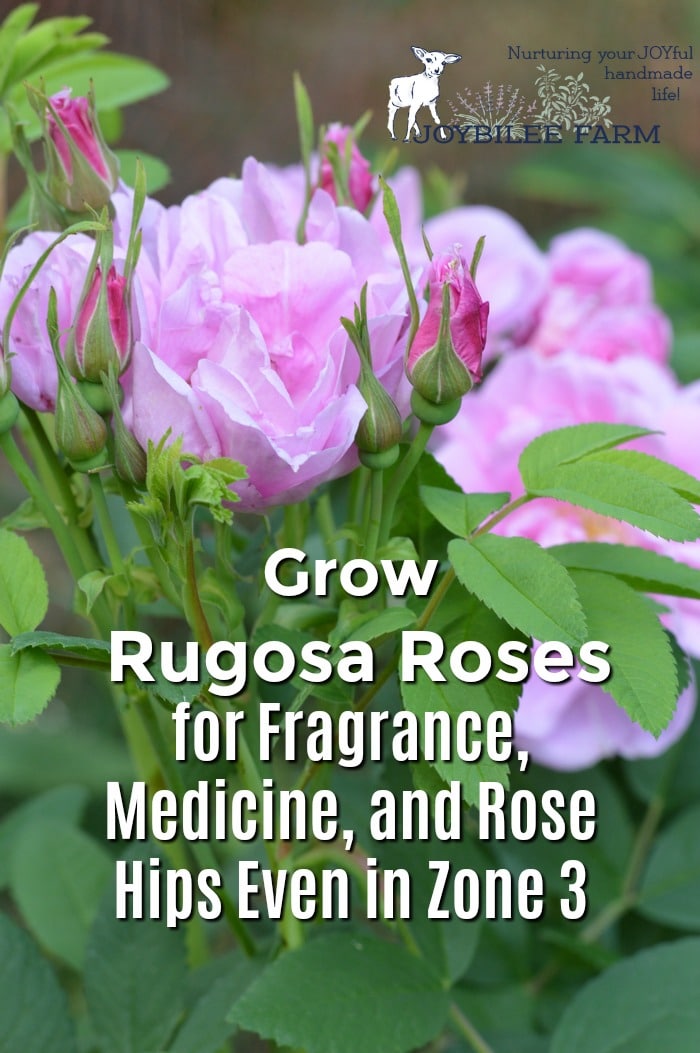
Unlike the native dog rose which blooms once in June or July, Rugosa roses bloom continuously till frost. The plants often have both blooms and ripening hips at the same time. You’ve probably seen Rugosa roses in the landscaped parking lots of shopping malls. They are favourites because they don’t require spraying, and can grow well even in poor soil, so they don’t need fertilization. Rugosa roses are usually grown on their own roots, so suckers growing up from the root can be divided and replanted and you can expect them to grow true.
Clay soil? No problem for Rosa rugosa. Sandy soil? Rugosas will still bloom. Salt spray and sea winds? Rugosas are called “Seaside Rose” because they can be found growing along coastlines around the world.
How to plant rosa rugosa
You can grow Rugosa Roses from seeds but the seeds need a chilling period before germination. If you already have a plant that you like, just take a hip in the Fall and put it in the ground where you want it to grow. Mark the spot so that you don’t mistake the new plant for a weed. After a winter chilling under the snow, you’ll see rose seedlings with their oval leaves come up from the ground.
You can also divide the roots and rhizomes of a thriving planting of Rugosa Roses, and transplant them in the fall or spring to a new location.
Like other roses, you can create another plant by rooting a cutting and then transplanting it out.
Invasive nature
Rugosa Rose is a hardy and vigorous grower. It is used as a hedge plant because of its speedy growth and hardiness. Rugosa roses can grow to 6 feet high and 6 feet wide. Rugosa roses prevent erosion with their strong root system. They are planted along coastlines and river banks for this reason. However, all these wonderful traits that make Rosa rugosa welcome in harsh climates give it a tendency to completely crowd out native species, especially on dunes, near the sea. Take this into consideration when deciding where to plant it.
Planting rugosa roses that are grafted onto other rootstocks can make them less aggressive in the landscape. In my harsh zone 3 forest garden, I like the vigorous nature of rugosa roses and will be planting my favourites on their own roots, rather than purchasing grafted specimens. I like the fact that they will sucker and fill in the areas where I plant them with lots of roses and be deer proof. The tall hedges will also act as a windbreak and allow me to create a microclimate, in a raised bed for other less hardy plants.
Medicinal hips and edible flowers from rosa rugosa
The Rugosa rose is one of the best roses for producing rose hips for herbal medicine. I took this photo, during a photography workshop, at the end of September 2014 in Whistler BC. These Rosa rugosa plants are blooming and producing hips. The leaves are just starting to yellow as the season cools at the ski resort. The hips are abundant and rich in vitamin C, antioxidants, and flavonoids. Both flowers and hips are edible, while the leaves are medicinal.
Like all rose family plants, all parts of the plant are astringent and good for the heart and circulation. The slight bitterness of the hips and petals aid digestion. The fragrance in rugosa roses is strong and attractive. However hybrid varieties vary when compared to the seed grown flowers, in both fragrance and colour.

Hansa Rugosa Rose
Rugosa roses have been bred for flower shape and colour. Single blossoms are common in wild roses but rugosas have been bred with double and even triple blossoms. Often the extra petals come with a loss of fragrance or shortened blooming season. You’ll want to check with the nursery to make sure that the hybrid rugosa has all the traits that you are looking for.
How much does a rugosa rose cost?
You can begin a rugosa rose hedge on your homestead with just a package of seeds from your favourite herb supplier. Plants started from seed will be somewhat variable, but other than taking a cutting from someone else’s bush, this is the least expensive way, to begin with, rugosa roses. Hybrid nursery plants cost a little more than other rose varieties. With named hybrids, however, there are several benefits. Many hybrid rugosa roses have been around for over 100 years and have proven their vigour and beauty. When choosing a hybrid you can pick for colour, the strength of fragrance and whether the flowers will be single or double petaled. Most rugosa roses will have a strong flush of blooms in June or July when the wild roses in your area bloom. The initial flowering period is long. Then they will have a few blossoms that continue to open till frost, while the hips from the first flush are ripening. Expect to pay around $20 per plant if you are buying hybrid nursery plants.

Therese Bugnet Rose
Here are a few of the many heritage Rosa rugosa hybrids you’ll find at a nursery near you.
You need to prune rugosas regularly to shape them and keep them from taking over. Keep them pruned and you’ll have lots of leaves and blossoms to use for herbal medicine, too, or to feed to your goats. However, this is true only if you plant rugosa roses that are growing on their own rootstock. Grafted hybrid rosa rugosa rose plants may not need to be pruned as vigorously, as they won’t sucker in the same way as hedge rugosa roses. The larger hybrid rugosa varieties like Therese Begnet or Wasagaming will need more pruning than the shorter varieties like Sarah Van Fleet.
Health benefits of roses
Rugosa Roses are rose family plants. Like other rose family plants, hawthorn, raspberry, and strawberry share similar herbal actions.
Roses are:
♥Astringent
♥Tonic
♥Laxative
♥Antispasmodic
♥Anti-inflammatory
♥Antidepressant
♥Sedative
♥Increases circulation
♥Heart tonic
♥Nutritive
How to harvest rugosa roses
Harvest rose petals in the morning when the dew is dry, but before the sun hits them. Harvest the rosehips after a frost, when they are sweeter and have more antioxidants and a brighter colour. Some rugosa rose hips are orange and some get cherry red, so the colour of the hips is not necessarily an indication of readiness for harvest.
25 Rose recipes For food and medicine
Once you have your roses thriving on your homestead you can use them for both food and medicine. These 25 rose recipes are just the beginning of the abundance that you’ll get from your rugosa rose plantings. You’ll see your first blossoms in the second year and by year 3 or 4 you’ll have a prolific harvest of both petals and hips to work with.
Rosa rugosa plants are disease and insect resistant and don’t usually need to be sprayed. But only harvest flowers and hips for food on plants that are free of sprays and poisons. Keep your food plants at least 20 feet away from roadways.
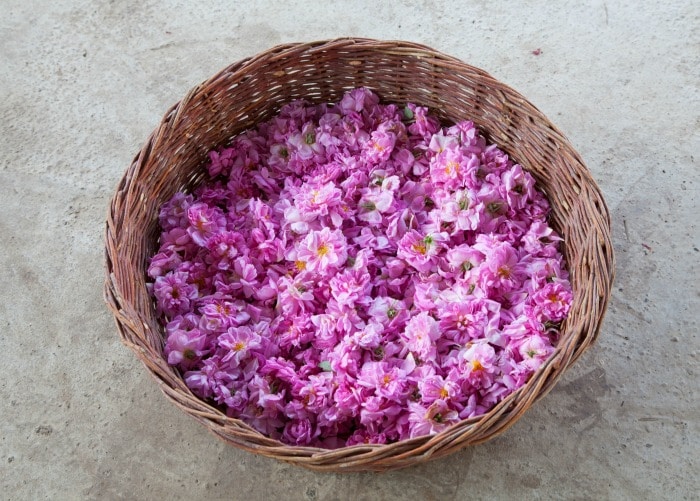
Use the blossoms — capture the scent and the flavour
Rose Petal and Black Cherry Mead
Rose Tea (harvest the blossoms in the bud stage)
Rose petal salve from Nerdy Farmwife
Use the hips — they are rich in antioxidants, flavonoids, and vitamin C
Wait until after a frost to harvest the hips. They will be softer and sweeter. The frost softens the flesh and makes them easier to work with, too. When you harvest the hips be sure to wear stout gloves. The stems are covered in fine thorns that will severely scratch your arms as you harvest if you aren’t protected. But these thorns are the reason that Rosa Rugosa makes such a fine hedge. Remove the stem and blossom end and slice each hip in half. Scoop out the seeds with your thumb. Only use the fleshy part of the rosehip. The hairy seeds are an irritant.
But you can save all the seeds and plant them out again in your garden to make more Rugosa Roses. Or dry them and grind them into a fine powder. Rosehip seeds are the origin of “itching powder”. (You didn’t hear it from me.)
But seriously, rose seeds are used as a diuretic and for relief of urinary tract disorders.
Rosehip and Elderberry Immune boosting syrup from Learning and Yearning
More about harvesting roses for blossoms and hips.
How to harvest rose hips for tea from The Homestead Lady
Learn more about using herbs for health and wellness from my Book
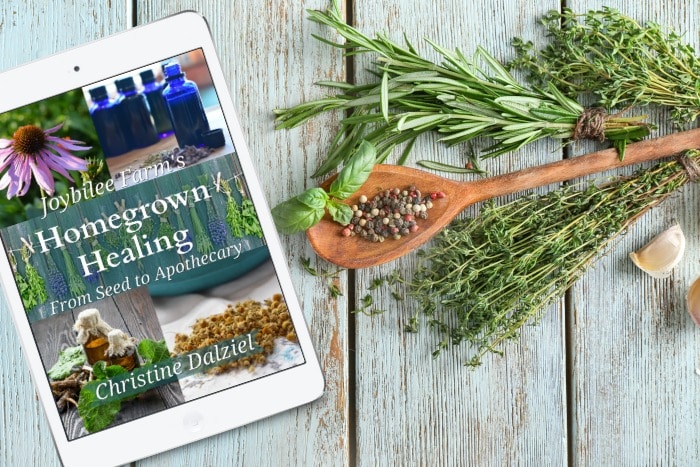
Grow rugosa roses and other medicinal herbs in your own garden
My book Homegrown Healing From Seed to Apothecary will help you grow healing herbs in your own garden. Focusing on the easiest plants for beginners to grow, Homegrown Healing From Seed to Apothecary covers 30 plants, recommended by professional herbalists, that can be grown in the temperate zone. Initial garden preparation, garden design and harvesting tips lead the novice herbalist into early success. Choose which herbs to grow, learn how to use these herbs for your family’s health and wellness using the guidance in my book. You can find out more about this useful guide to growing more herbs and using them strategically here.




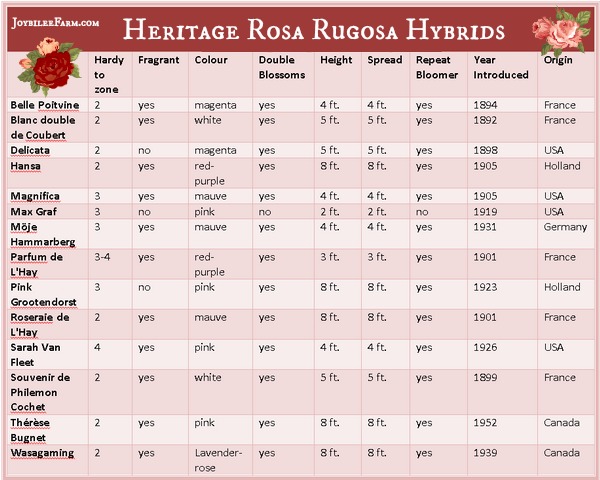
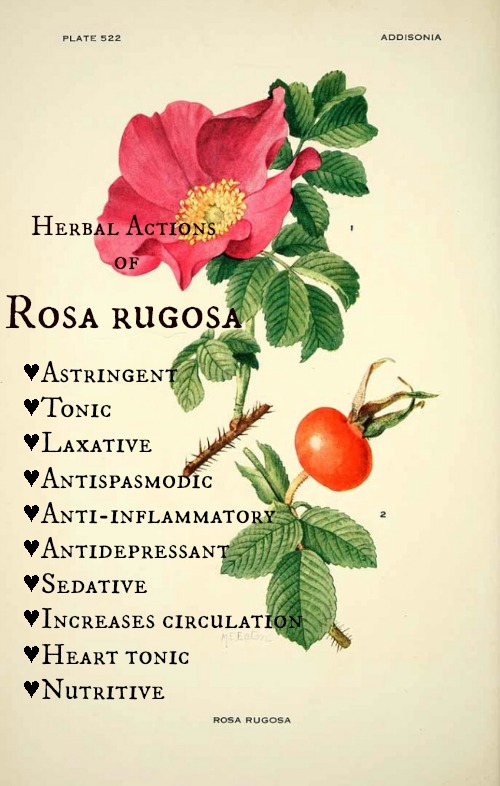
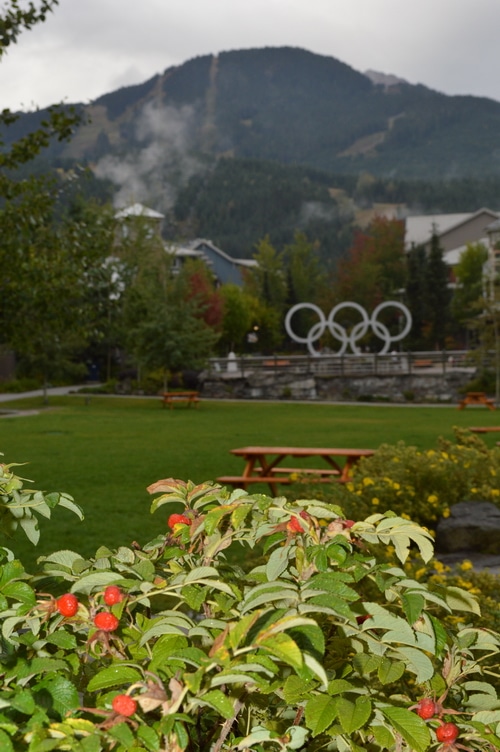
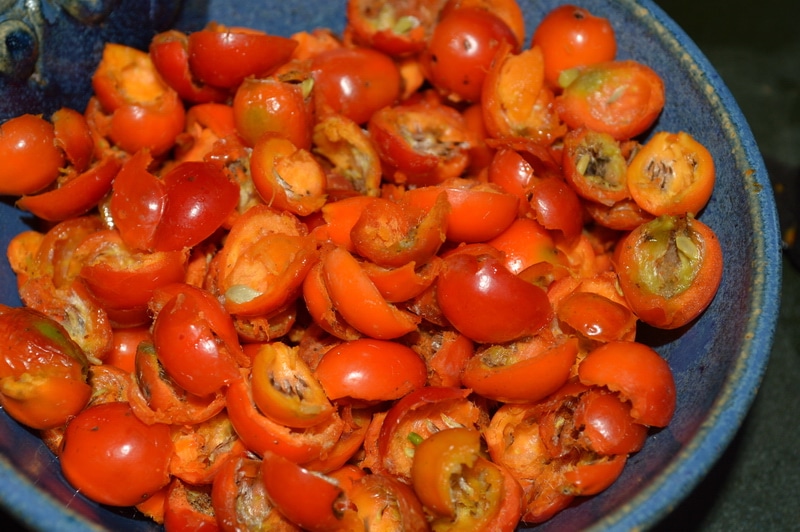


It only works if the hips are still attached to the plant. But you could simply harvest them and use them as is without the freeze. The vitamin C content is higher in the hips before frost, but the lycopene content (another antioxidant) is increased after frost.
Just wondering if an individual could pick the hips and then freeze them for the “frost”?
Roses are one of the flowers I like, they bring fragrance, beauty and balance to life.
It depends on the genetics of the particular roses you have. Some only bloom in June or July, others reflower all season. There is no need to dead head them. If you do decide to dead head you will get reblooms faster, but you will also lose the hips.
We were given two bushes as a gift two years ago. First year the deer did a job on them. (We are located on a lake). My question is is there a way to keep them flowering? Do you need to deadhead plants ?